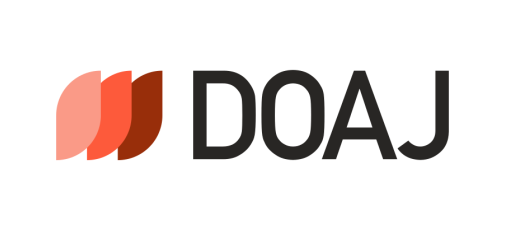Efficiency of Students’ Needs Assessment Application Facilitated by Text Communication Media
Abstract
Abstract: Needs assessment is the main thing performed by school counselors as a basis for developing a guidance and counseling service program. In conducting needs assessment, problems that frequently occur are related to ratios, feasibility and practicality of instruments, as well as needs assessment procedures. One solution that can be used to overcome these problems is the use of application analysis needs of students based on text communication media. This research aims to determine the efficiency of students’ needs analysis application based on text communication media on vocational high school students. The research method used was experiment with the one-group pretest-posttest design technique. The research population was 45 vocational high school counselors in Kediri city. The percentage of random sampling was 25% of the total population, so the number of subjects was 11 people. The research instrument was the Students’ Needs Efficiency Assessment Questionnaire by the school counselor and interviews. The research data were analyzed in descriptively and comparative tests. Based on the analysis results, the needs assessment of text-based media communication is to improve the efficiency of students’ assessment declared efficient.
Abstrak: Assessment kebutuhan merupakan hal pokok yang dilakukan konselor sekolah sebagai dasar dalam menyusun program layanan bimbingan dan konseling. Dalam pelaksanaan assessment kebutuhan, kerap terjadi masalah terkait rasio, kelayakan dan kepraktisan instrumen, maupun prosedur assessment kebutuhan. Salah satu solusi yang dapat digunakan untuk mengatasi masalah tersebut adalah penggunaan aplikasi analisis kebutuhan siswa berbasis media komunikasi teks. Penelitian ini bertujuan untuk mengetahui efisiensi aplikasi analisis kebutuhan siswa berbasis media komunikasi teks pada siswa sekolah menengah kejuruan. Metode penelitian yang digunakan adalah eksperimen dengan teknik one-group pretest-posttest design. Populasi penelitian adalah konselor sekolah menengah kejuruan se-kota Kediri yang berjumlah 45 orang. Persentase pengambilan sampel secara acak sebesar 25% dari total populasi, jadi jumlah subjek sebesar 11 orang. Instrumen penelitian menggunakan Kuisioner Efisiensi Assessment Kebutuhan Siswa oleh konselor sekolah dan wawancara. Data penelitian dianalisis secara deskriptif dan uji beda. Berdasarkan hasil analisis, assessment kebutuhan berbasis media komunikasi teks untuk meningkatkan efisiensi assessment siswa dinyatakan efisien.
Keywords
Full Text:
PDFReferences
Anni, C. T. (2012). Need Assesment Model Penyusunan Program Bimbingan dan Konseling Bidang Bimbingan Belajar Berbantuan Sistem Informasi Manajemen di SMA Negeri Kota Semarang. Educational Management, 1(1).
Bakti, C. P., & Safitri, N. E. (2017). Peran Bimbingan dan Konseling untuk Menghadapi Generasi Z dalam Perspektif Bimbingan dan Konseling Perkembangan. Jurnal Konseling GUSJIGANG, 3(1), 104–113.
Borg, W. R., & Gall, M. D. (1983). Educational Research: An Introduction. New York. Longman Publishing.
Brott, P. E. (2006). Counselor Education Accountability: Training the Effective Professional School Counselor. Professional School Counseling, 10(2), 179–188. https://doi.org/10.1177/2156759X0601000204
Cahyawulan, W., Badrujaman, A., Fitriyani, H., Mamesah, M., Wahyuni, E., & Djunaedi, D. (2019). Peningkatan Kompetensi Teknologi dan Informasi Guru Bimbingan dan Konseling. CARADDE: Jurnal Pengabdian Kepada Masyarakat, 1(2), 195–199. https://doi.org/10.31960/caradde.v1i2.76
Chaamwe, N., & Shumba, L. (2016). ICT Integrated Learning: Using Spreadsheets as Tools for e-Learning, A Case of Statistics in Microsoft Excel. International Journal of Information and Education Technology, 6(6), 435–440. https://doi.org/10.7763/IJIET.2016.V6.728
Cohen, E., & Angeles, J. (2006). School-Based Prevalence Assessment of The Need for Mental Health Services: Survey Development and Pilot Study. Research on Social Work Practice, 16(2), 200–210. https://doi. org/10.1177/1049731505283379
Darmadi, H. (2011). Metode Penelitian Pendidikan. Bandung: Alfabeta.
Graham, C. M., Anchors, S., & Doore, B. E. (2012). Student Learning Preferences and SMS Text Messaging: A Web 2.0 Large Classroom Engagement System. International Journal of Information and Communication Technology Research, 2(8), 638–645.
Gregory, R. J. (2011). Validity and Test Development. Psychological Testing; History, Principles and Applications 6th Ed. Boston: Allyn & Bacon, 109–151.
Gysbers, N. C., & Henderson, P. (2012). Developing & Managing: Your School Guidance & Counseling Program (5th ed). American Counseling Association.
Hanggara, G. S., Andrianie, S., & Ariyanto, R. D. (2018). Pengembangan Aplikasi Assessment Menggunakan Media Short Message Service. Jurnal Kajian Bimbingan dan Konseling, 3(4), 146–153. https://doi.org/10.17977/um001v3i32018p146
Hays, D. G. (2014). Assessment in Counseling: A Guide to The Use of Psychological Assessment Procedures. John Wiley & Sons.
Jones, G., Edwards, G., & Reid, A. (2009). How Can Mobile SMS Communication Support and Enhance A First Year Undergraduate Learning Environment? ALT-J, 17(3), 201–218.
Kurniawan, L. (2015). Pengembangan Program Layanan Bimbingan dan Konseling Komprehensif di SMA. Jurnal Psikologi Pendidikan & Konseling, 1(1), 1–8.
Olaleye, O., Olaniyan, A., Eboda, O., & Awolere, A. (2013). SMS-Based Event Notification System. Journal of Information Engineering and Applications, 3(10), 55–62.
Sebok, S. S., & MacMillan, P. D. (2014). Assessment of A Master of Education Counselling Application Selection Process using Rasch Analysis and Generalizability Theory. Canadian Journal of Counselling and Psychotherapy, 48(2), 108–126.
Setiawan, M. A. (2016). Peranan Teknologi Informasi dalam Bimbingan dan Konseling. Bitnet Jurnal Pendidikan Teknologi Informasi, 1(1), 46–49.
Sukmadinata, N. S. (2012). Metode Penelitian Pendidikan. PT Remaja Rosdakarya.
Sumarwiyah, S., & Zamroni, E. (2017). Pemanfaatan Tekonologi Informasi (TI) dalam Layanan Bimbingan dan Konseling Sebagai Representasi Berkembangnya Budaya Profesional Konselor dalam Melayani Siswa. Jurnal Bimbingan dan Konseling Ar-Rahman, 2(1), 1–14.
Thompson, D. W., Loesch, L. C., & Seraphine, A. E. (2003). Development of An Instrument to Assess The Counseling Needs of Elementary School Students. Professional School Counseling, 7(1), 35–39.
Triyono, T., & Febriani, R. D. (2018). Pentingnya Pemanfaatan Teknologi Informasi oleh Guru Bimbingan dan Konseling. JUANG: Jurnal Wahana Konseling, 1(2), 74–83.
Watson, J. C., & Flamez, B. (2014). Counseling Assessment and Evaluation. SAGE.
Whiston, S. C. (2012). Principles and Applications of Assessment in Counseling. Cengage Learning.
Yusuf, S. (2009). Program Bimbingan dan Konseling di Sekolah.
DOI: http://dx.doi.org/10.17977/um001v4i42019p150
Refbacks
- There are currently no refbacks.
Copyright (c) 2019 Guruh Sukma Hanggara, Nora Yuniar Setyaputri, Restu Dwi Ariyanto

This work is licensed under a Creative Commons Attribution-ShareAlike 4.0 International License.
Jurnal Kajian Bimbingan dan Konseling
ISSN 2503-3417 (online), ISSN 2548-4311 (print)
Email: jkbk.fip@um.ac.id
Find Jurnal Kajian Bimbingan dan Konseling on:
 This work is licensed under a Creative Commons Attribution-ShareAlike 4.0 International License |  |
View Visitor Stats







